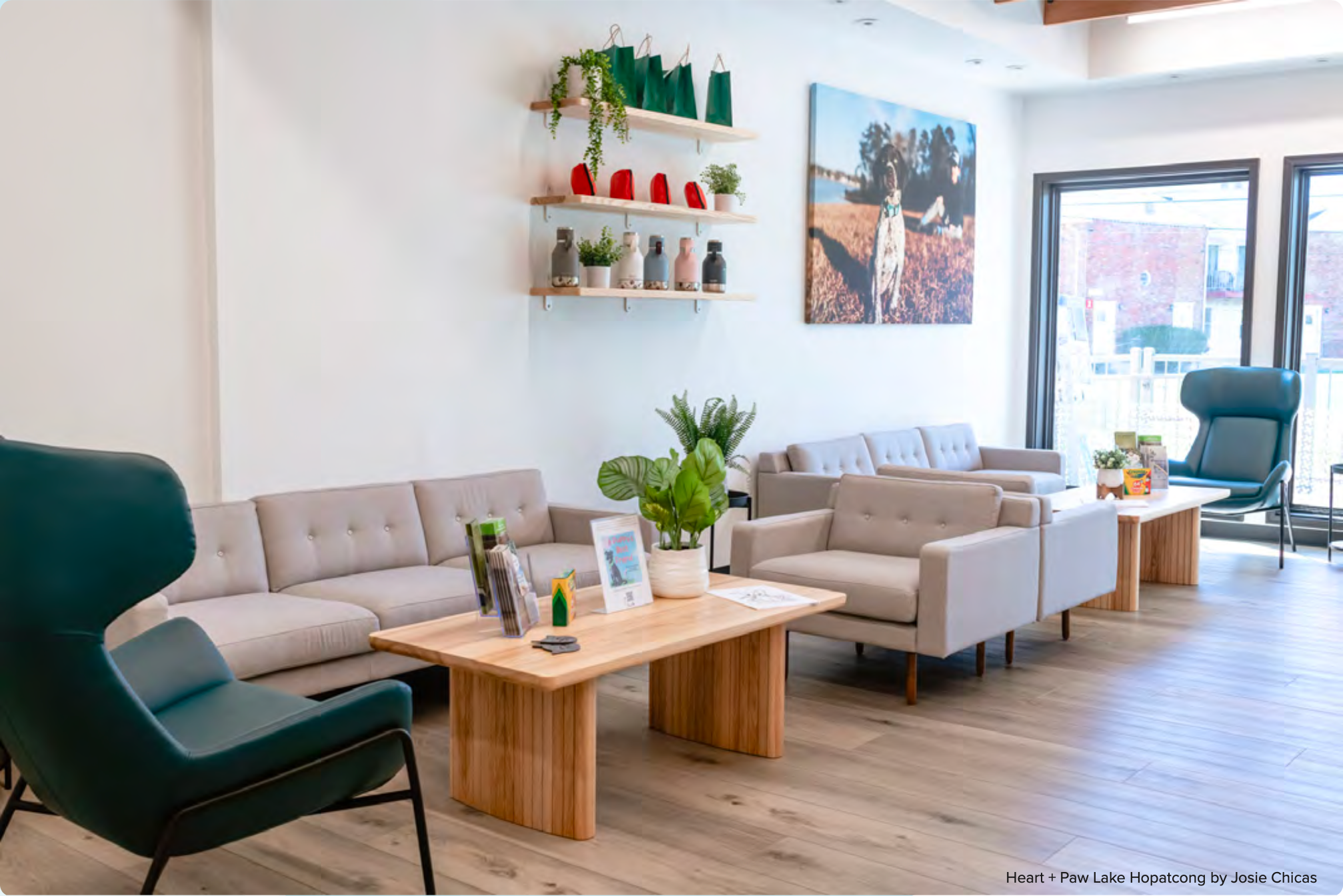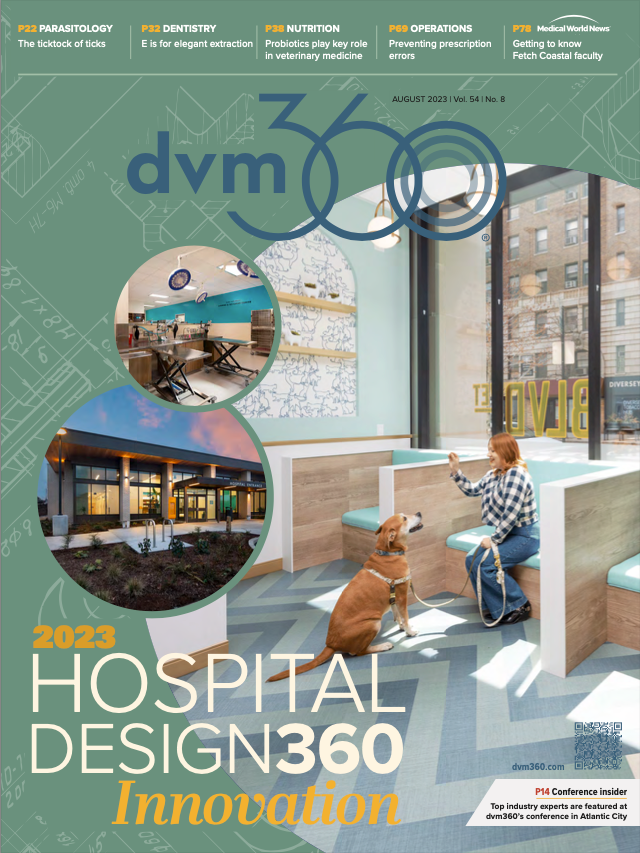Using effective lighting to support health and happiness
The right source and amount of illumination in a practice can benefit patients, staff, and clients
Lighting is one of the largest consumers of energy in a commercial building, accounting for approximately 17% of the electricity used, according to Energy Star.1 Newer, more stringent building codes have been released to regulate this energy consumption, limiting the watts per foot a commercial project may consume. But this also affects the lighting levels, or lumens per square foot, that artificial lighting can provide, which is critical in the performance of doctors and staff. Based on this, finding efficient ways to light a space is a critical part of designing your building.
Advances in the lighting industry have helped these opposing requirements work together. Energy-efficient LED lighting raises the lumens per square foot while lowering the power usage. Newer light fixture designs can direct the light where it is needed most, saving on wasted lamp power. But the most energy-efficient light source of all is the sun. Depending on availability (time of day and location of space within a building), utilizing natural light can be an effective way to meet lighting needs. Not only can it drastically reduce energy consumption and electric bills but results of multiple studies have shown the health and mental well-being benefits of sunlight. Of course, uncontrolled sunlight can be harsh and stress the air conditioning system. The trick is knowing how and where to implement it into your design.
Buildings have been designed around natural light for millennia. However, during the energy crisis in the 1970s, architects started closing up buildings to protect against solar heat gain. In the 1990s, high-performance glass became economical, and sustainable design standards began to be enforced. Those trends have accelerated, and today natural light is a prime focus. But not all sunlight is good sunlight. In general, we want to see but not be directly in sunlight. Southern and western light can be harsh, making us uncomfortably hot even with the air conditioning blasting. Instead, we want northern and cool morning eastern light. Orienting the building on the site is often a no-cost solution. Southern light can be more easily controlled with exterior overhangs. When forced to use western light, more aggressive and costly approaches are necessary, so we tend to limit the glass on a building’s west side.
Interior spaces can use skylights or light tubes. Using interior windows to carry light deeper into interior rooms is referred to as borrowed light. Interior exam rooms, which often feel small or tight, are greatly improved with borrowed light. Transoms over doors, high and wide interior clerestory windows, and full-height frosted glass can transform an otherwise claustrophobic room into a welcoming space. Depending on the building’s shape, it’s possible to add exterior windows to interior rooms by raising the ceiling and roof to allow another type of clerestory window. These work best in larger spaces such as treatment rooms. Since most clinical spaces are used for patient treatment, they can all benefit from borrowed light.

There is a balance between getting as much natural lighting into a space as possible without compromising the use of that space. Sunlight harvesting controls are sensors that switch off light fixtures when there is sufficient natural light in the room, making them a very efficient form of solar power. Instead of expensive solar panels creating energy to power fixtures, this method uses sunlight directly. Through sensors and monitoring controls, artificial lighting also can be controlled automatically based on the available natural lighting levels rather than relying on staff to turn off or adjust.
Evidence-based design measures benefits of design choices by comparing outcomes. Much research in this area has been done for human health care. Patients exposed to a pleasing exterior view, including green space, and who can maintain a natural night/day circadian rhythm will recover faster than those closed off from the outside world. Intensive-care unit psychosis is real, and natural light also has benefits for mental health in animals.2 Used in intensive-care units and wards, natural light can reinforce the natural sleep/wake cycle. Morning light has a higher energy blue/white cast that triggers the brain into a higher awareness. Normal daytime light has a more neutral color, and evening light has warmer tones tending toward the red end of the spectrum, which triggers melatonin production.3
If you are interested in creating a healthful space, you must consider patient, client, and staff; they play off each other. Patients can be anxious or fearful of a clinic. What is making it so? Intuitively, we say it’s because they are picking up on other fearful animals’ feelings. Surprisingly, instead it may be their owners’ feelings. A recent study published in Animal Cognition established a positive link between the stress of an individual and that of dogs through chemosignals alone.4 Add to that the well-documented ability of animals to read facial expressions and body language and we see client comfort greatly impacts patient comfort. Make the clients happy and it’s far more likely their pets will be too. For staff, studies report reduction in employee absenteeism, higher productivity, and improved achievement with the appropriate levels and types of lighting.5
Of course, the sun doesn’t always shine, so we need to use artificial lighting too. Even here there is much we can do to maintain a healthful environment. First is selecting the right source. LEDs are much more energy efficient (approximately 100 lumens per watt), are easily and inexpensively dimmable, and contain no toxic mercury, unlike fluorescent lamps.
Another advantage is the wide range of color temperatures available. The color a light renders is expressed in degrees Kelvin, where lower numbers are more warm and higher are cool. A 2500 K lamp is considered warm white; 3500 K is cool white; 4500 K is close to daylight. Above that will look unnaturally blue. As a standard, we use 4000 K lamps in our projects. That way the light tube diffusers and LED fixtures appear to have the same color. This also give a very good color rendition index (CRI). Full daylight has a CRI of 100; a lamp with a CRI of 85 or above is very good. This is important especially in clinical spaces for accurate visualization and diagnosis. An added benefit of high CRI sources is that your interior design colors will likewise render correctly.
Artificial lighting can also be used to achieve a desired architectural effect. Higher light levels will make a room appear bigger. A low ceiling can be visually overcome by washing that surface with uplights. Conversely, if we wish to draw attention away from the ceiling, the use of only downlights will accent the lower spaces and features. Long hallways can appear less so by illuminating 1 of the side walls. A shadowed/less bright end wall will appear to advance. Washing a wall with light using purpose-made fixtures will highlight logo walls and can add visual interest to otherwise unremarkable spaces.
In short, the effective use of both natural daylight and artificial lighting supports the health and happiness of patients, staff, and clients, making it a critical part of your building’s design.
Dave Gasser, AIA, NCARB; BDA Architecture Building Design for Animals, LLC: Since joining BDA Architecture in 1999, Gasser has specialized his architectural degree in the design of animal care facilities. Now a partner in the firm, Dave has completed designs for more than 100 animal care facilities in the past 20 years, with several receiving hospital design awards.
References
1. Upgrade your lighting. Energy Star. Accessed July 12, 2023. https://www.energystar.gov/buildings/save_energy_commercial_buildings/ways_save/ upgrade_lighting
2. Lewis HE. Fear Free shelters: why natural light is important. Accessed July 17, 2023. https://fearfreepets.com/fear-free-shelters-why-natural-lighting-is-important/
3. Blume C, Garbazza C, Spitschan M. Effects of light on human circadian rhythms, sleep and mood. Somnologie (Berl). 2019;23(3):147-156. doi:10.1007/s11818-019-00215-x
4. D’Aniello B, Pinelli C, Scandurra A, Di Lucrezia A, Aria M, Semin GR. When are puppies receptive to emotion-induced human chemosignals? The cases of fear and happiness. Anim Cogn. 2023;26(4):1241-1250. doi:10.1007/ s10071-023-01771-4
5. Jensen A. How office lighting affects productivity. Updated April 9, 2023. Andrew Jensen. Accessed July 17, 2023. www. andrewjensen.net/how-office-lighting-affects-productivity/
